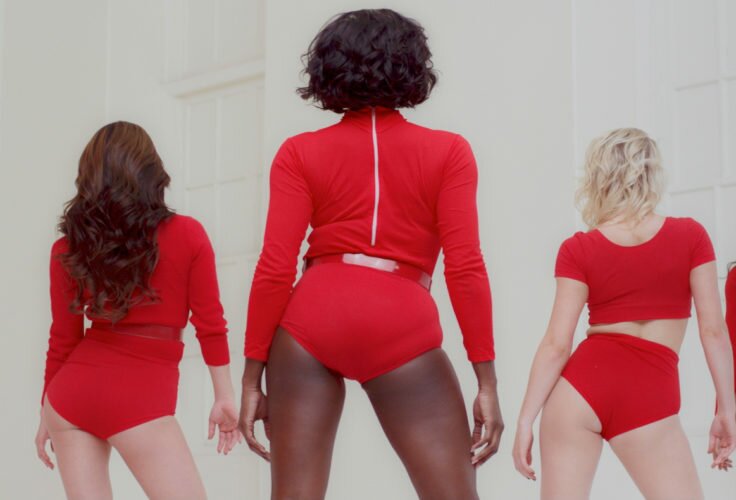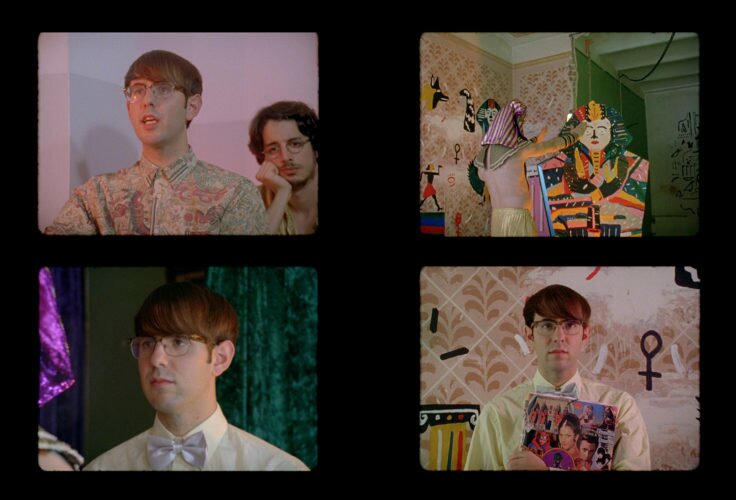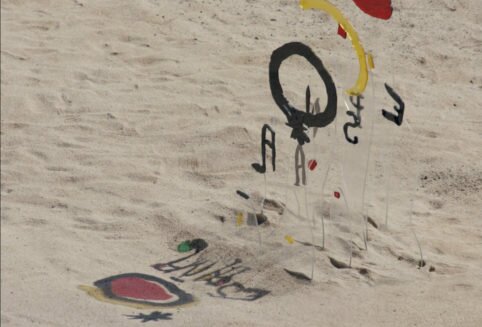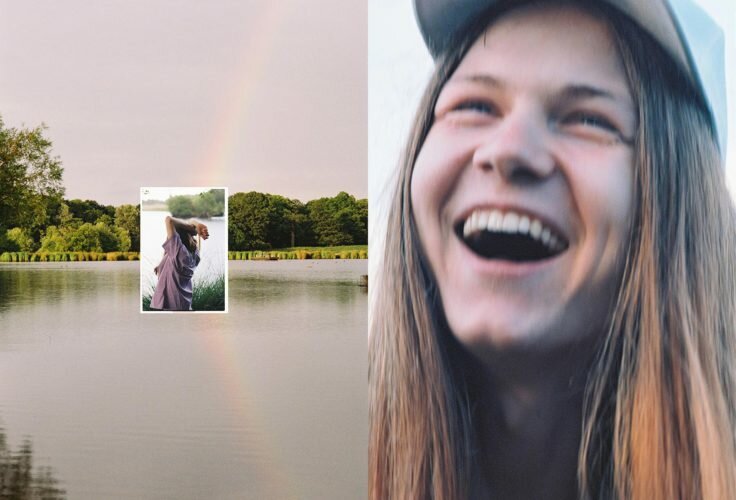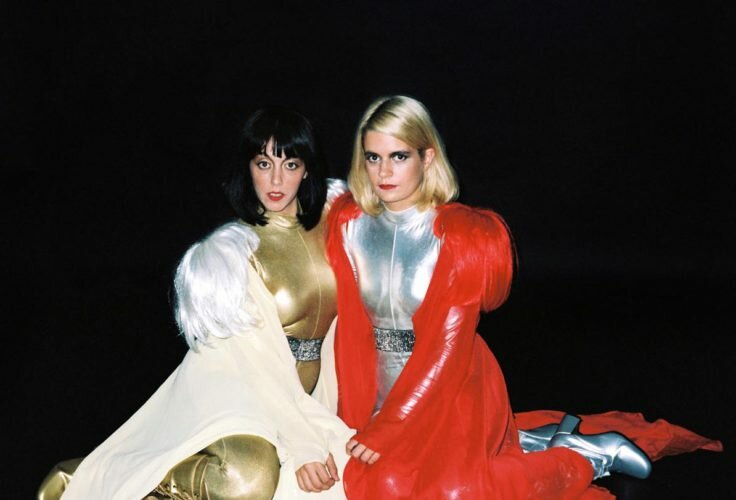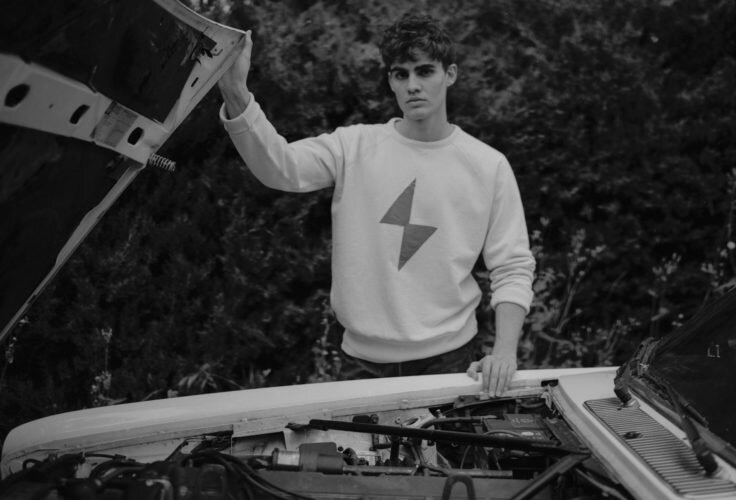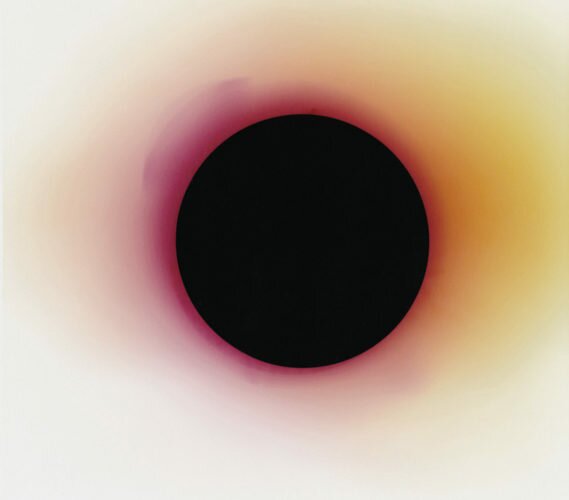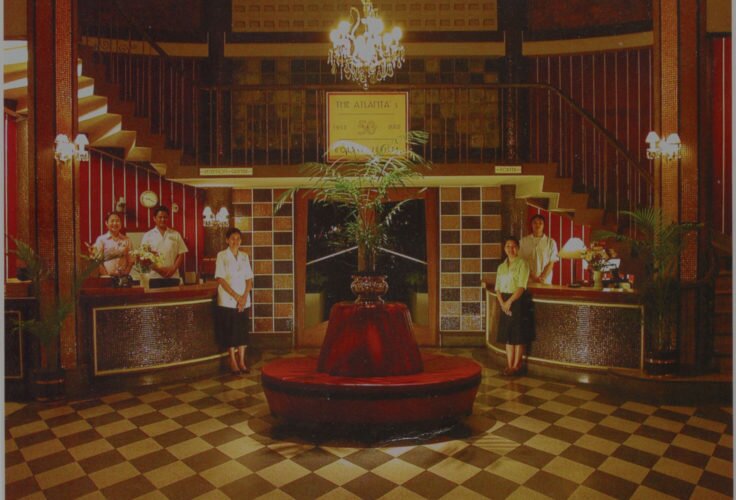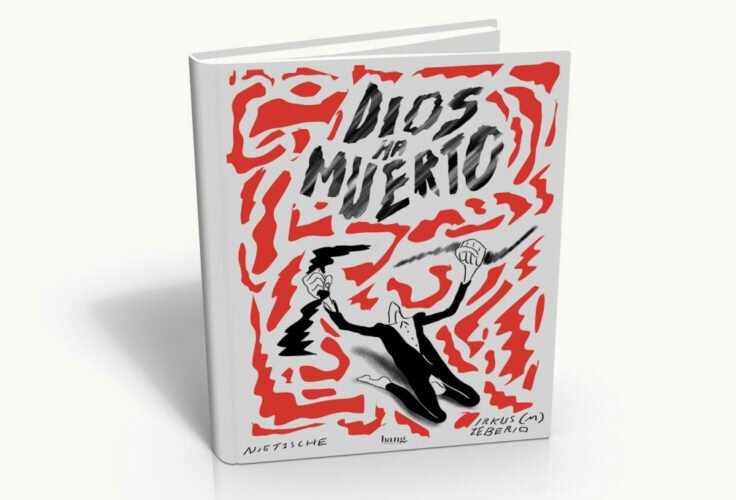Déborah García devoted the second instance of her series “Artists in the age of web 2.0” to Maya Deren. And she invents how her Vine would be like.
Painting
Andy Warhol’s face
by Déborah García

andy warhol
fuckyeahandywarhol



I’ve got to confess this: I never liked Andy Warhol‘s works, except for some videos and a series of photographs that I saw compiled in a book my friend Héctor has in his living room (America, in an edition by Estrella de Diego). I liked that trip around US obsessions, the fixation with fame, money, immortal myths and new ones created around the New York scene. That afternoon at my friend Héctor’s place I thought that the book was like the country it represented: contradictory, with opposites cancelling and erasing each other out, autobiographical and ideal for travelling, as Estrella de Diego says: “America ends up being a kind of extension of the Factory itself, the particular set -and I don’t mean it only literally, but also- where Warhol created his characters, those «quarter of an hour famous» who became so because he touched them with his magic wand and who followed him as long as the artist’s powerful intelligence kept his interest in them, sometimes little longer than those fifteen minutes of fame we would all be entitled to in the future, as he used to say.”
The photographs in that book mixed the faces and landscapes of rural America with a version of the United States the appearance of which were the faces of the stars populating the media. There was something chillingly soothing in seeing them all at the same level. Anonymous people mixed up with the super famous. I guess Warhol realised that there was something there, that there was something equalling them. The Coca-Cola one could have at any town in Iowa was exactly the same that president Kennedy took at the White House. Representing it en masse was like putting an end to class struggle, like the prostitute jerking both Olmo and Alfredo off at the same time in Novecento. Everybody was attracted to a new age in the same way.
Since I started playing around with the idea of using Snapchat for Artists in the Age of Web 2.0, Andy Warhol appeared as the character who best fitted the app: the filters, the comic-style stickers, the re-using of images to subject them to mutations, and, above all, its ephimeral nature, which has already become a value that many companies try to monetise. To be honest, Snapchat seems yet another extension of Warhol’s work. In the last year, this social network has become the young people’s favourite. 75% of its users are between thirteen and twenty-five. Many brands and politicians have seen the gold mine possibilities of this app. This is why candidates such as Bernie Sanders or Hillary Clinton have opted to target younger people with their campaigns (some of whom can’t even vote yet) by sending snaps. What makes this social network different from the rest is that while Facebook and Twitter have tried to recover old information, Snapchat shows you new content every day. Data are very clear about this: each day, ten thousand million videos are viewed, and they disappear 24 hours after they were published. That immediate and ephimeral character, Snapchat’s blueprint, which was before seen as a teenage thing, is multiplied and ceases to be a handicap to become a value.




When Snapchat was created, it allowed you to send videos or pictures that disappeared right after they were viewed, so one of its biggest things was privacy. It isn’t possible to know how many followers each user has either, and this eliminates the social hierarchy that Twitter has, for instance, where “classes” are perfectly delimited. Here everybody is entitled to his or her seconds of fame. The yellow social network fitted perfectly the style of Warhol’s work and even his own spirit.
The ephimeral nature of Snapchat made me look for a way of re-creating the destruction suffered by anything published on it. Then I came up with the idea of re-creating this ephimeral nature of Snapchat with GIFs, granting images a ten-second viewing time and after that turning them into a longer-lasting black layer. I also thought about giving the text a best before date (but, xd).
The snaps I imagined for Andy Warhol are full of emojis and stickers, pop colours and the sentences he himself pronounced in his lifetime. Reproducing again his images as he did with the works of so many artists and Hollywood stars, painting his face, inserting his mythical sentences and the equalling factor made me feel a bit like him, if you’ll allow me.
The playful nature of pop works, even of the works here recreated, do not deny at all their social compromise and historical reading: Andy Warhol’s oeuvre works as a kind of thermometer, not only for the social movements which occurred while they were created, but also the artistic ones.
Snapchat marks the zeitgeist right now: the challenge that companies, politicians and personalities encounter is adapting to the app’s language. Today, Snapchat works as a kind of consolidation of the brand, but marketing professionals already work to see how they can monetise it.
Andy Warhol hides behind his sometimes-frivolous masks. I have veiled him myself and have hidden the thing that we can almost always glimpse in his works: a Warhol concerned about social issues, about marginalisation and the ways to fight against it, unemployment, homeless people and, no doubt about it, immigration, all of them very current affairs.
People always remember the same Warhol sentence, that is: “in the future, everyone will be world-famous for 15 minutes.” Now it isn’t even that. A witty tweet, a Vine video, an Instagram pic… What everybody seems to forget (me included) is the huge work behind it.
By having been in touch with his work for these past few weeks, I’ve been allowed to study how Warhol “worked” for his fame. In the end, what can be glimpsed in the artist’s work is that it’s not so much about working to become famous, but becoming famous thanks to all the work done. Or what is the same; Warhol is the contrary of all those “fifteen-minute famous people” who, by the way, are so popular nowadays on TV, twitstars, influencers…VIPs. Maybe Warhol, in his incarnation as a moralising character, embodies like no one else that approach: fame as a fruit of work and not work to reach fame.
Snapchat, besides, has something terrifying but absolutely modern: a huge deadly drive (something also present in Warhol’s work). The death of the image created in web 2.0 reveals the ephimeral nature of the world we spend so much time in, the digital world. What existed yesterday no longer exists today. My own experience with Snapchat was like that. The first day I created the FuckYeahWarhol profile I saved all the snaps in my biography. Naive as I was, twenty-four hours later, when I tried to review my digital biography as Andy Warhol, there was nothing. Digital frailty emerges stronger than ever in a social network that doesn’t want to remember who you are, what you have done, or who you have interacted with for more than a day. Snapchat, the forgetful social network. Snapchat, you make me shit my pants. Long life to Snapchat!




